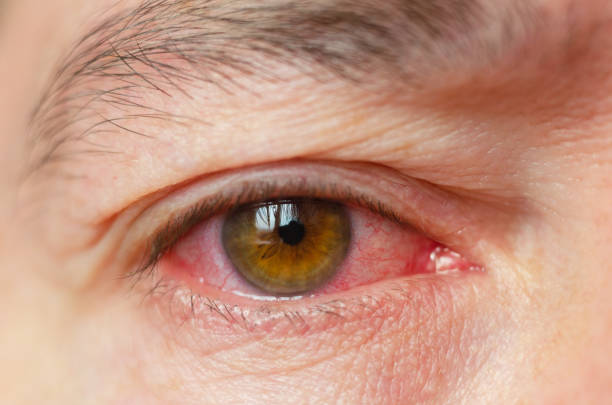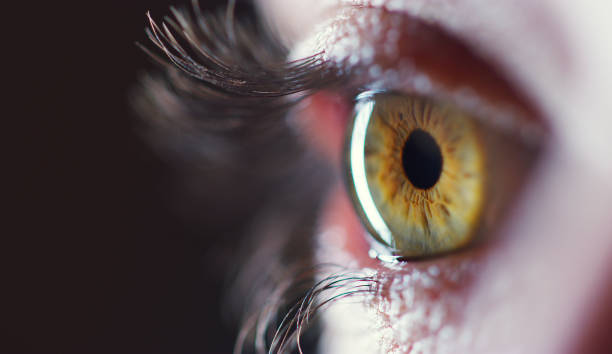Your eyes are one of your most important senses. But did you know that many eye diseases begin with symptoms so subtle, you might not even notice them? These early signs are easy to miss—but ignoring them can lead to serious problems like vision loss or even blindness. Some eye conditions also signal other health issues, such as diabetes or high blood pressure.
The good news? Catching these hidden signs early can protect your sight and overall health. In this post, we’ll go over the most common hidden signs of eye diseases, what they could mean, and when it’s time to see an eye doctor. Let’s dive in and learn how to keep your eyes healthy, sharp, and strong.
Why Early Detection of Eye Diseases Matters
Many eye diseases develop slowly and without pain. This makes them easy to miss. You might not realize anything is wrong until your vision changes a lot—and by then, the damage could be permanent.
Detecting eye problems early can help prevent:
- Lasting vision loss
- Ongoing eye pain or discomfort
- Serious health issues tied to other conditions
That’s why it’s so important to recognize the early signs. Spotting them early gives you a better chance to protect your vision and overall health.

1. Frequent Headaches Could Be a Red Flag
It’s normal to get a headache now and then. But if you’re having them often—especially after reading, working on a computer, or using your phone—it might be more than just stress. These headaches could be a sign of an eye issue that needs attention.
Some possible causes include:
- Eye strain from uncorrected vision problems
- Glaucoma, which raises pressure inside the eye
- Refractive errors such as astigmatism, farsightedness, or nearsightedness
Headaches related to your eyes usually get worse later in the day or after long periods of focusing. If that sounds familiar, don’t ignore it. Schedule an eye exam to find out what’s going on.
Learn more from the American Academy of Ophthalmology.
2. Blurry Vision Comes and Goes
Blurry vision doesn’t always stay the same. It may come and go throughout the day. This might seem like no big deal, especially if it clears up on its own. But your eyes could be warning you about a deeper issue.
Blurry vision that changes may be linked to:
- Diabetic retinopathy
- Macular degeneration
- Dry eye syndrome
- Cataracts
These conditions can get worse over time. Don’t wait until the blur becomes constant or your vision is at risk. An eye exam can help catch the cause early and protect your sight.
3. Trouble Seeing at Night
Do you avoid driving at night because everything looks dim or blurry? If so, you might be dealing with night blindness—a common but often overlooked warning sign of an eye problem.
Night vision trouble may be caused by:
- Cataracts, which cloud the lens and block light
- Retinitis pigmentosa, a rare genetic disorder that affects peripheral and night vision
- Vitamin A deficiency, which can harm the retina and reduce your ability to see in low light
If you find yourself squinting at street signs, struggling with glare, or seeing halos around headlights, it’s time to talk to your eye doctor. Early treatment can make night driving safer and protect your long-term vision.
4. Floaters or Flashes of Light
Do you see tiny specks, cobwebs, or sudden flashes of light in your vision? These are called floaters and flashes. Some are normal, especially as you age. But a sudden change—like more floaters or bright flashes—could be a sign of a serious eye problem.
These symptoms may point to:
- Retinal detachment
- Vitreous detachment
- Inflammation or bleeding inside the eye
If you notice a curtain-like shadow over your vision or a sudden swarm of floaters, get emergency care right away. Quick treatment can save your vision.
Read more about retinal detachment from the National Eye Institute.
5. Eye Pain or Pressure
Your eyes should never feel sore, heavy, or painful. Eye pain is not normal and should never be brushed off. Even mild pressure can be a sign that something serious is going on.
Eye pain or pressure may be caused by:
- Acute angle-closure glaucoma (a medical emergency that needs fast care)
- Inflammation such as uveitis or scleritis
- Eye infections caused by bacteria or viruses
If you feel pressure behind your eye or pain when moving your eyes—especially with blurry vision or redness—schedule an eye exam right away. Catching the problem early can help prevent lasting damage.

6. Red or Watery Eyes
Red, itchy, or watery eyes are often written off as a result of allergies or tiredness. However, if these symptoms happen often or don’t go away, they could signal a more serious underlying condition.
Conditions that may cause red or watery eyes include:
- Conjunctivitis (pink eye)
- Dry eye disease, which causes discomfort and blurred vision
- Blepharitis (inflammation of the eyelids)
- Corneal ulcers, which are open sores on the cornea
If your eyes stay red or watery for an extended period, it’s important to get an eye exam. Your eye doctor can determine the cause and recommend the right treatment to prevent further issues.
7. Sensitivity to Light
Do your eyes feel overly sensitive to sunlight or bright lights indoors? This condition, known as photophobia, can be more than just an annoying inconvenience—it may be a sign of an underlying eye issue.
Sensitivity to light can be caused by:
- Infections like uveitis, which cause eye inflammation
- Corneal problems, such as abrasions or infections
- Migraines, which can heighten light sensitivity
- Eye inflammation from conditions like iritis
If you experience photophobia along with other symptoms like eye pain, headaches, or blurred vision, it’s important not to ignore them. Get an eye exam to find out what’s causing your discomfort and how to treat it.
8. Difficulty Reading Small Print
Do you find yourself holding your phone farther away or needing extra light to read small text? While this can be a normal part of aging (presbyopia), it could also be a sign of other vision problems.
Other potential causes of difficulty with small print include:
- Macular degeneration, which affects the center of your vision
- Diabetic eye disease, which can lead to vision changes and even blindness
- Glaucoma, which can damage the optic nerve and cause vision loss
If you’re constantly adjusting your glasses, squinting, or struggling to read fine print, it’s time to schedule an eye exam. Early detection of any eye conditions can help preserve your vision.
9. Color Vision Changes
Do colors seem duller than usual, or are you confusing similar shades? These subtle shifts in color perception can creep up on you without you noticing.
Possible causes of color vision changes include:
- Optic nerve damage, which affects the transmission of visual information to the brain
- Macular degeneration, which can distort color vision and central vision
- Cataracts, which cause a clouding of the lens and affect color clarity
Although color vision changes are often overlooked, they can indicate problems with the retina or optic nerve. If you notice these changes, it’s important to get an eye exam to identify and treat the issue.
10. Uneven Pupils or Eye Movement
Take a moment to check your eyes in the mirror. Are your pupils the same size? Do both eyes move together smoothly, or is one drifting? Uneven pupils or abnormal eye movement could point to serious health issues.
Possible causes include:
- Nerve damage, which can affect pupil size and eye movement
- Stroke, which may impact the brain’s control over the eyes
- Brain injury, which can interfere with how the eyes move or focus
- Tumors, which can press on areas of the brain responsible for eye movement
These signs might seem unrelated to your eyes, but they are important indicators of potential health problems. If you notice any irregularities, don’t wait—get them checked by a doctor as soon as possible.ted to eye health but are critical clues. Always get them checked out quickly.

Tips to Protect Your Eyes and Vision
Now that you know the signs of potential eye problems, let’s focus on prevention. Taking care of your eyes is easier than you might think, and with a few simple habits, you can maintain healthy vision for years to come.
Follow these practical tips to protect your eyes:
- Get regular eye exams — Even if your vision seems fine, regular check-ups help detect problems early.
- Wear sunglasses — Protect your eyes from harmful UV rays that can lead to cataracts and other conditions.
- Take screen breaks — Follow the 20-20-20 rule: every 20 minutes, take a 20-second break and look at something 20 feet away to reduce digital eye strain.
- Eat a healthy diet — Include leafy greens, fish rich in omega-3s, and foods high in vitamin A to support eye health.
- Manage chronic conditions — Conditions like diabetes and high blood pressure can affect your eyes, so it’s important to keep them in check.
- Don’t smoke — Smoking increases the risk of cataracts, macular degeneration, and other eye diseases.
Taking steps now can make a big difference in preserving your sight. Need help finding an eye doctor? Visit the American Optometric Association’s doctor locator for assistance.
When to See an Eye Doctor
You don’t need to wait until something feels “wrong.” Regular check-ups can catch silent threats before they do damage.
See an eye doctor if you notice:
- Sudden changes in vision
- Increased floaters or light flashes
- Eye pain, redness, or discharge
- Trouble seeing in low light
- Headaches related to vision
Even if you’re not experiencing symptoms, a comprehensive eye exam every 1-2 years is a smart habit for lifelong eye health.
Final Thoughts: Don’t Ignore the Hidden Signs
Your eyes are always trying to tell you something—are you paying attention? Many signs of eye diseases can be hard to spot, and it’s easy to ignore the small changes. However, addressing these issues early can make a huge difference in protecting your vision.
It’s time to take charge of your eye health:
- Be mindful of subtle symptoms that may indicate a problem
- Make regular eye exams a priority to catch issues early
- Don’t hesitate to act quickly if you notice something unusual
By being proactive today, you’re ensuring that your eyes will continue to support you for years to come. Healthy eyes are key to enjoying the world around you—don’t take them for granted!
What’s one small change you can make today to take better care of your eyes?
Let us know in the comments below—we’d love to hear from you!

